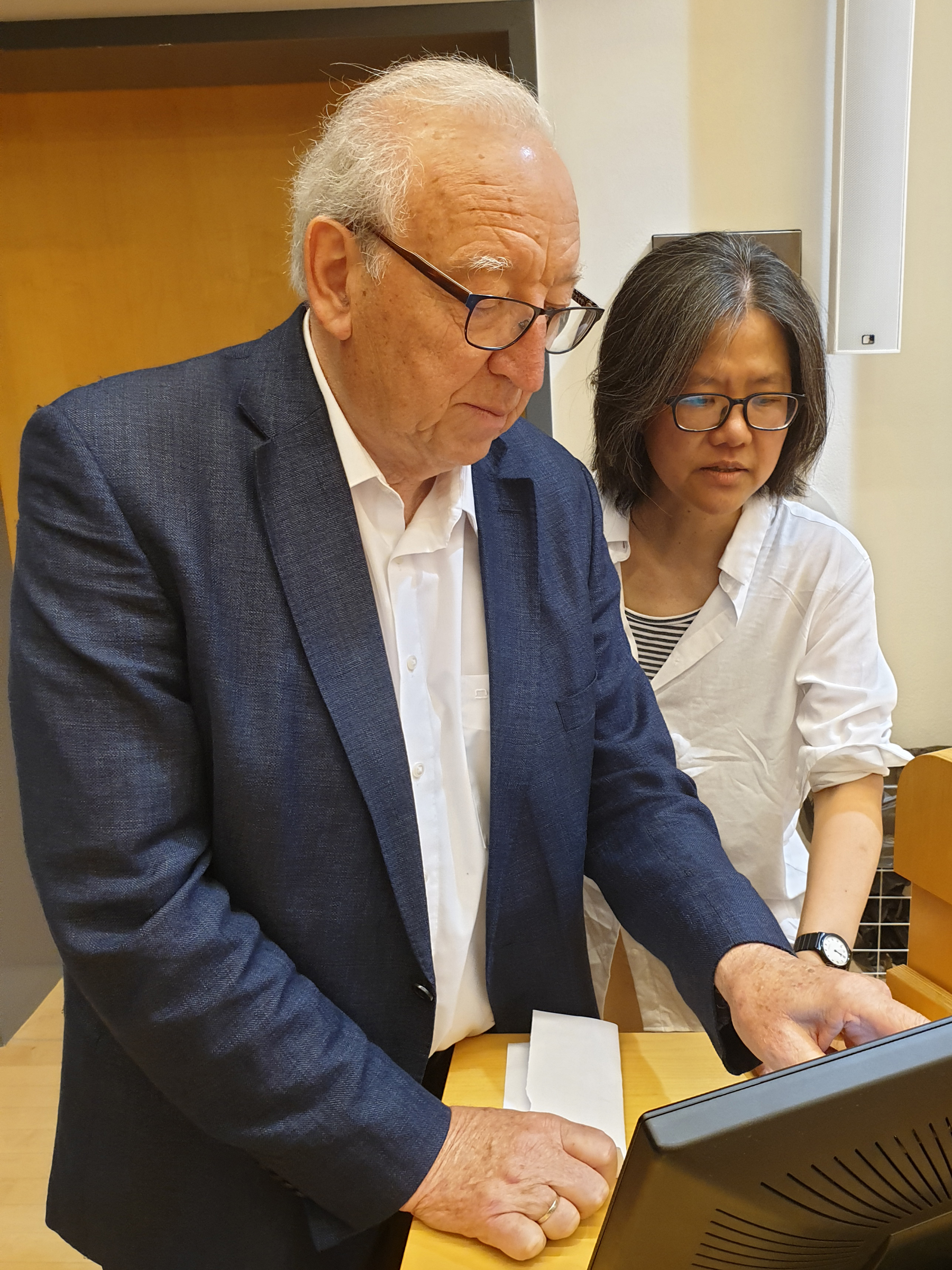Ophthalmic Research Symposium with Professor Li Zhaoping
During the third Ophthalmic Research Symposium of the Institute for Ophthalmic Research on June 26, Prof. Li Zhaoping, who recently joined the Max Planck Institute for Biological Cybernetics in Tuebingen, provided insight into her research of computational and experimental neuroscience.
As outlined in the introductory speech given by Prof. Eberhart Zrenner, Prof. Zhaoping has conducted research around the world, starting with a degree in Physics from Fudan University, Shanghai, followed by a PhD from California Institute of Technology, postdoc positions in Batavia, Princeton, and New York, faculty positions in Hong Kong and London, and now a professorship and Max Planck fellowship in Tuebingen. While her research started with the olfactory system, she subsequently studied the visual system, especially color vision, and she now sees herself in the middle between computational and psychophysical research with the aim to investigate vision from both a perceptual and abstract angle using computer models, psychophysics, imaging techniques, and electrophysiology.
“If you don’t look, you don’t see!”
Prof. Zhaoping started her talk with a demonstration of crowding to introduce the three stages of vision, namely encoding of the visual input (by retinal neural activities), selection (in primary visual cortex), and decoding. Crowding is a phenomenon in which neighboring objects around the target object prevent peripheral object recognition, forcing the performance of a saccade to select the target. Prof. Zhaoping explained that “vision” could be translated into two separate processes, “looking” and “seeing”. “Looking” is the stage of selection, a bottom-up process taking place in the periphery, while “seeing” is the stage of decoding, where mainly the central visual field is involved. During decoding, a feedforward-feedback from the higher brain areas to the primary visual cortex (V1) is performed in case of ambiguous or unclear perception in central vision. This top-down feedback, which she called “feedforward-feedback-verify-weight” process, can be studied using computational algorithms.
To investigate the central-peripheral dichotomy, Prof. Zhaoping performed experiments with dichoptic stimuli in the form of gratings that lead to different perceptions depending on whether the binocular sum or difference of the monocular input is chosen. The results revealed that perception is biased towards the binocular summation channel for central vision, however less so for peripheral vision. In central vision, the top-down feedback to V1 might include the experience that visual input is normally correlated between both eyes. Thus, Prof. Zhaoping proposed that the top-down feedback to V1 is weaker or even absent in peripheral vision (Zhaoping, 2017).
She tested her hypothesis in depth perception by measuring the response of a V1 neuron to disparity in random dot stereograms (RDS). These are images with randomly arranged interocularly corresponding black and white dots that are presented to the left and right eye with a lateral offset from each other in a certain area, creating a depth illusion of object surfaces. If black dots in one monocular image correspond to white dots in the other (anticorrelation), the neuron’s response changes so that a reversed depth perception is transferred from V1 to higher brain areas for verification. The feedforward-feedback from these areas, however, vetoes the V1 report and prevents the perception of the illusion. Surprisingly, the illusion can be detected in peripheral vision which supports her previous proposal that the top-down feedback is weaker or missing in the peripheral visual field (Zhaoping & Ackermann, 2018).
Translating her research to the clinical application, Prof. Zhaoping explained that this central-peripheral dichotomy could be studied in patients with macular degeneration as the lack of foveal vision might allow them to perceive the illusion created by anticorrelated RDS. Prof. Zhaoping concluded her talk by giving further innovative and promising examples of possible collaborations between the clinical work and her theoretical, psychophysical approach.
Publications:
- Zhaoping, L. (2017). Feedback from higher to lower visual areas for visual recognition may be weaker in the periphery: Glimpses from the perception of brief dichoptic stimuli. Vision research, 136, 32-49.
- Zhaoping, L., & Ackermann, J. (2018). Reversed Depth in Anticorrelated Random-Dot Stereograms and the Central-Peripheral Difference in Visual Inference. Perception, 47(5), 531-539.
The talk was kindly hosted by Prof. E. Zrenner; the summary of the talk was performed by Sandra Wagner & Julian Hilmers






